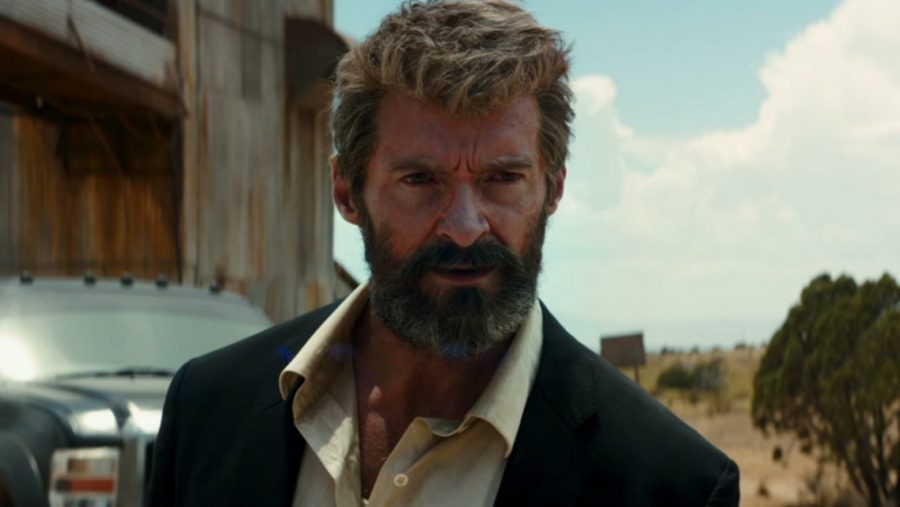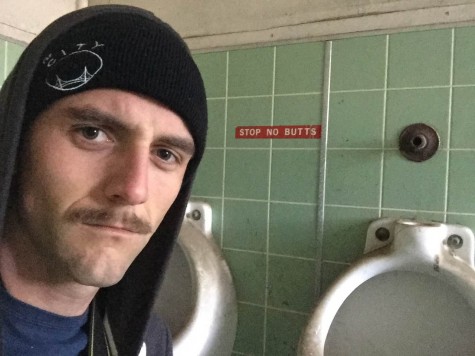‘Logan’ on the cutting edge of superhero films
March 9, 2017
Comic book movies have dominated the decade, with movie studios shelling out hundreds of millions of dollars in exchange for billion dollar box office returns. They’re generally fun spectacles — villains threaten to blow up the world, our heroes fend them off, if just for one day — but they ultimately fail to stick in our minds for long. We know that when it comes down to our hero and the baddie, if anyone’s going to die, it’s not the guy with the sequel coming out in two years, and it’s hard for an audience to feel invested in the fates of unseen apartment dwellers. James Mangold’s “Logan,” one part Western and one part road movie, changes the formula by personalizing the stakes. It’s one man shepherding a young girl and an elderly man through a savage land, and the limited focus pays off brilliantly.
His eyes are bloodshot, his breath is rank with whiskey and his violent past — saturated with the blood of both his enemies and friends — leaves him sleepless. In any other movie, Hugh Jackman’s Logan would be a gunslinger, meandering from town to town in search of a bar he hadn’t been ejected from, but in “Logan,” he’s a limo driver in Southern Texas. At night, he crosses the border and returns home to an abandoned factory where Professor Charles Xavier (Patrick Stewart) resides within a collapsed water tower. Xavier, ill with a degenerative brain disease, is prone to seizures that hijack his immense telekinetic powers, creating dangerous psychic storms. Logan is planning on buying a boat for the two to retire on when a young mutant, Laura (Dafne Keen), shows up, asking for safe passage to Canada. After much persuasion from Xavier, Logan agrees.
Mangold shows his characters watching “Shane” about halfway through the movie. The classic lone gunslinger film informs Mangold’s, and the movie greatly benefits from the emotional core it gives the often-soulless comic book genre. Family is a prevalent theme here— the makeshift father-son relationship between Charles and Logan and Logan’s reluctantly paternal obligation to Laura contrasts with both the idyllic Midwestern family the trio meet along the way and the monsters chasing them.
Though “Logan” doesn’t concern itself with the fate of a metropolitan area or the world, it doesn’t lack when it comes to action. Without the other X-Men to muddy the waters, Wolverine and Laura — who shares a similar combat style — are able to fully cut loose, and the R rating is used to great effect. Fight scenes in which the duo do battle with dozens of mercenaries are beautifully choreographed, the pair interweaving as operator after operator is left short a limb, or, more often than not, thoroughly stabbed in the head.
Jackman, who’s been playing Wolverine for 17 years, gives a sublime performance, imbuing the character with incredible amounts of gravitas. Mangold doesn’t need to tell us how broke down Logan is because Jackman looks like life has run him over, looped back around and run him over again. The legendary Patrick Stewart gives the ailing Xavier a tragic authenticity that will prove doubly effective to anyone who’s had a grandparent with Alzheimer’s. But perhaps most impressive is Keen, making her feature film debut. The young actress switches effortlessly between her character’s feral and vulnerable sides, and her explosive chemistry with Jackman is key to the film’s success.
“Captain America: The Winter Soldier” was a slight change from the norm, a throwback to the political thrillers of the ‘70s, at least until bloated finale. “Logan” represents what will hopefully be a seismic shift in the genre, a wholesale abandonment of tired conventions and an embrace of fantastic writing. But it almost feels cheap to say that this is a great comic book movie— it’s a great movie, period.


